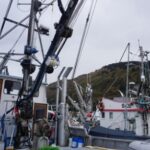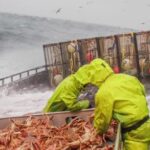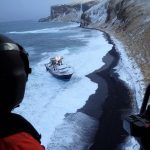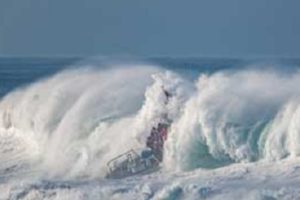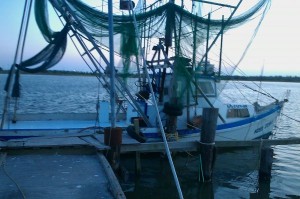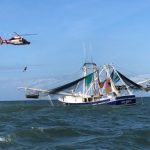Tag Archives: Scotian Shelf
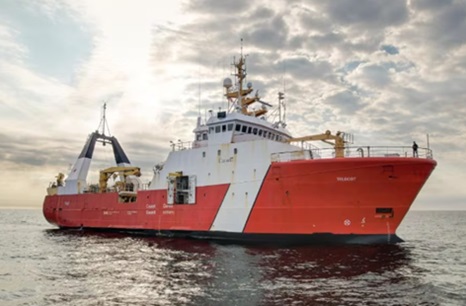
Waters off Scotian Shelf are cooling while scientists wonder if decade-long warming trend is over
In recent years, warming temperatures have grabbed headlines, with record highs being set throughout the region. Recently, on the Scotian shelf, it has moved in the other direction. “It is really interesting,” Beazley said in a wharfside interview at the Bedford Institute of Oceanography. “We did see a continuation of the trend that we observed in 2023, which was the temperatures are actually returning to normal or even below normal conditions in some areas. It’s getting cooler.” Since 2012, ocean temperatures off Nova Scotia at depth have been consistently warmer — by about two degrees above normal. more, >>CLICK TO READ<< 09:29
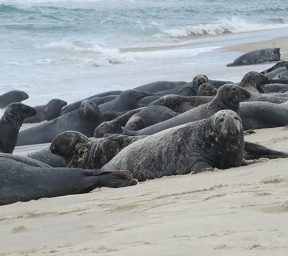
DFO: Atlantic Canada Grey Seal population is slowing
The grey seal population in Atlantic Canada continues to grow and is now estimated at 366,000, according to the 2021 stock assessment released Thursday by the Department of Fisheries and Oceans. But DFO says the population is growing at a much slower rate than in previous years and for the first time in 60 years it is believed pup production has decreased on Sable Island. Scientists used a new model to estimate the population in the latest report. It converted pup production numbers from aerial surveys to total population by combining reproductive and survival rates with the small number harvested by humans. Applying the new modelling to its 2016 estimate produced a sharply lower result. >click to read< 13:44
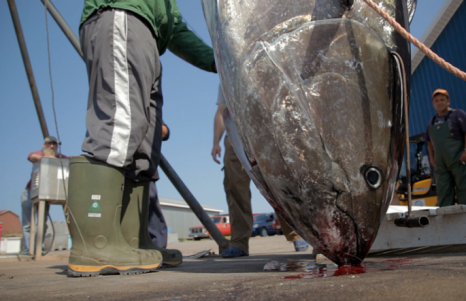
Bluefin tuna in P.E.I. are so hungry they no longer fear humans
Bobbing up and down on cold Atlantic waters, several fishermen toss scaly, silver mackerel overboard. It’s a delicious snack for a bluefin tuna — the largest species of tuna in the world, measuring more than six feet in length and weighing up to 1,600 pounds. The newcomer among them, a writer and ecologist, expects to spend the afternoon patiently waiting for a bite. Instead, the bluefin tuna here in North Lake, P.E.I. are so abundant and so hungry that within minutes their trademark yellow caudal finlets are circling the boat. click here to read the story 18:29
Strange fish found on the Scotian Shelf
 For 25 years Don Clark has been going to the Scotian Shelf to see what’s there. For the last decade the fisheries biologist at the St. Andrews Biological Station in New Brunswick has been in charge of the federal Fisheries and Oceans summer survey. Just after Canada Day each year, the CCG Alfred Needler heads out to trawl 240 way points on the Scotian Shelf between Georges Bank in the south and the Laurentian Channel in the north. It’s an immense area — the 120,000 square kilometres of continental shelf that extends off Nova Scotia’s eastern shore into the North Atlantic. click here to read the story 11:56
For 25 years Don Clark has been going to the Scotian Shelf to see what’s there. For the last decade the fisheries biologist at the St. Andrews Biological Station in New Brunswick has been in charge of the federal Fisheries and Oceans summer survey. Just after Canada Day each year, the CCG Alfred Needler heads out to trawl 240 way points on the Scotian Shelf between Georges Bank in the south and the Laurentian Channel in the north. It’s an immense area — the 120,000 square kilometres of continental shelf that extends off Nova Scotia’s eastern shore into the North Atlantic. click here to read the story 11:56
Haddock Boom! The number of haddock believed to have survived their first year off N.S. is “extraordinary,” says biologist
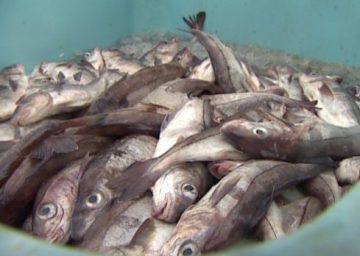 Exactly how many of the haddock that hatched in 2013 are still swimming off the coast of southern Nova Scotia is not certain, but researchers agree the numbers are potentially massive. Biologist Monica Finley recently completed a population assessment for the southern Scotian Shelf and Bay of Fundy. She estimates 264 million haddock were hatched there in 2013 and survived their first year, making it an “extraordinary” year-class. “This 2013 year-class is five times higher than the next highest on record since 1985,” said Finley, who works at a Department of Fisheries and Oceans research facility in St. Andrews, N.B. Her report predicts 100,000 metric tonnes of haddock will reach adulthood in 2017 and 2018. On Georges Bank, the population is predicted to be even bigger, with Canadian and American scientists estimating the 2013 hatch at 1.3 billion fish. Read the story here 18:36
Exactly how many of the haddock that hatched in 2013 are still swimming off the coast of southern Nova Scotia is not certain, but researchers agree the numbers are potentially massive. Biologist Monica Finley recently completed a population assessment for the southern Scotian Shelf and Bay of Fundy. She estimates 264 million haddock were hatched there in 2013 and survived their first year, making it an “extraordinary” year-class. “This 2013 year-class is five times higher than the next highest on record since 1985,” said Finley, who works at a Department of Fisheries and Oceans research facility in St. Andrews, N.B. Her report predicts 100,000 metric tonnes of haddock will reach adulthood in 2017 and 2018. On Georges Bank, the population is predicted to be even bigger, with Canadian and American scientists estimating the 2013 hatch at 1.3 billion fish. Read the story here 18:36
Warming trend continues in waters off Atlantic Canada
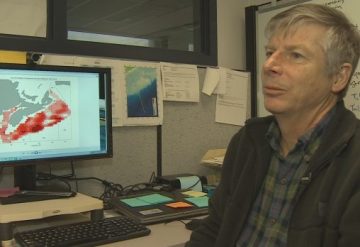 Warmer ocean temperatures off Atlantic Canada continued in 2016, maintaining a trend that started earlier this decade, according to survey results from Canada’s Department of Fisheries and Oceans. On the Scotian Shelf off Nova Scotia, temperatures last year were as high as three degrees above the 30-year average used to establish climatic norms. “It’s not quite the same [record] level of 2012, but it’s getting close to it,” said Dave Hebert, a research scientist with DFO. He added that 2016 was probably the second warmest year on record. Scientists have struggled to explain what is causing the most intriguing aspect of the recent trend: the warming of ocean bottom water, which is not influenced by surface weather events. Hebert said the latest theory is based on model results that see the Gulf Stream moving northward and intersecting with the tail of the Grand Banks. “That is stopping the cold Labrador Sea water from coming around the tail of the Grand Banks,” he said. “That’s where we normally get the cold water that refreshes the [Scotian] Shelf. That hasn’t been happening. Read the story here 16:48
Warmer ocean temperatures off Atlantic Canada continued in 2016, maintaining a trend that started earlier this decade, according to survey results from Canada’s Department of Fisheries and Oceans. On the Scotian Shelf off Nova Scotia, temperatures last year were as high as three degrees above the 30-year average used to establish climatic norms. “It’s not quite the same [record] level of 2012, but it’s getting close to it,” said Dave Hebert, a research scientist with DFO. He added that 2016 was probably the second warmest year on record. Scientists have struggled to explain what is causing the most intriguing aspect of the recent trend: the warming of ocean bottom water, which is not influenced by surface weather events. Hebert said the latest theory is based on model results that see the Gulf Stream moving northward and intersecting with the tail of the Grand Banks. “That is stopping the cold Labrador Sea water from coming around the tail of the Grand Banks,” he said. “That’s where we normally get the cold water that refreshes the [Scotian] Shelf. That hasn’t been happening. Read the story here 16:48
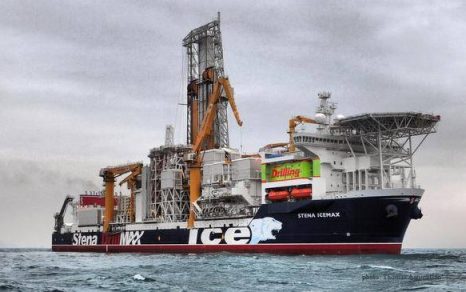
Shell Canada offshore drilling incident too close for comfort in area near rich fishing grounds
When heaving waters in the North Atlantic wrenched a string of massive steel pipes from a drilling ship off Nova Scotia’s coast, one of the 20-tonne sections of the plummeting coil struck the seabed just 12 metres from the top of an undersea oil exploration well. The distance is one of several details in a Shell Canada accident report received through access to information legislation, prompting critics to say the entire incident was too close for comfort in an area near one of Atlantic Canada’s richest fishing grounds of the Scotian Shelf. A summary report by the regulator issued earlier this year had said a heavier portion of the drilling system fell 22 metres from the wellhead, but didn’t mention the closer distance of pipes that are coiled and criss-crossed through an area of seabed the size of three football fields in length and breadth. Read the story here 12:32
OOPS!! – Pipe breaks on Nova Scotia drilling rig, falls to ocean floor
 Two kilometres of pipe that connects an offshore drilling rig to a wellhead deep under the ocean broke off and sank in a storm off Nova Scotia’s coast Saturday, prompting concerns from an advocacy group over the risks of deepwater accidents caused by harsh ocean conditions. Shell Canada says there was no drilling fluid or hydrocarbons leak because the pipe had already been drained of fluids and a blowout protector remained in place over the well. The Scotian Shelf includes some of the province’s richest fishing grounds for haddock, and a huge spawning area for lobster. Read the rest here 09:20
Two kilometres of pipe that connects an offshore drilling rig to a wellhead deep under the ocean broke off and sank in a storm off Nova Scotia’s coast Saturday, prompting concerns from an advocacy group over the risks of deepwater accidents caused by harsh ocean conditions. Shell Canada says there was no drilling fluid or hydrocarbons leak because the pipe had already been drained of fluids and a blowout protector remained in place over the well. The Scotian Shelf includes some of the province’s richest fishing grounds for haddock, and a huge spawning area for lobster. Read the rest here 09:20
Shell approval for oil drilling off Nova Scotia raises alarms in fishing industry
 The approval from the Canada-Nova Scotia Offshore Petroleum Board to allow Shell Canada to drill two oil wells on the edge of the Scotian Shelf is raising alarm bells among some in the fishing industry. “Four of those leases are directly in the major fishing banks of the Scotian Shelf,” said Davis, the former head of an anti-drilling group called the No Rigs Coalition. “Two are contiguous to the moratorium area of Georges Bank, two are to the northeast of Georges Bank and one takes in the southern part or heel of Browns Bank. The Scotian Shelf industry is under assault from the oil and gas industry.” Read the rest here 15:02
The approval from the Canada-Nova Scotia Offshore Petroleum Board to allow Shell Canada to drill two oil wells on the edge of the Scotian Shelf is raising alarm bells among some in the fishing industry. “Four of those leases are directly in the major fishing banks of the Scotian Shelf,” said Davis, the former head of an anti-drilling group called the No Rigs Coalition. “Two are contiguous to the moratorium area of Georges Bank, two are to the northeast of Georges Bank and one takes in the southern part or heel of Browns Bank. The Scotian Shelf industry is under assault from the oil and gas industry.” Read the rest here 15:02
Shell Canada Ltd to deploy seismic survey ships to survey deepwater sites off Nova Scotia’s southwestern shore.
 Starting next week, Shell will begin exploring about 12,200 square kilometres of an area known as the Shelburne Basin. The 3-D seismic survey program is to continue until early September, reporters assembled near the ships were told Saturday. It’s the largest seismic program in the province’s history. If the exploration activity bears fruit, initial drilling is expected to begin in 2015.The provincial government’s analysis of potential energy reserves indicates some 120 trillion cubic feet of natural gas and eight billion barrels of oil could be extracted. continued
Starting next week, Shell will begin exploring about 12,200 square kilometres of an area known as the Shelburne Basin. The 3-D seismic survey program is to continue until early September, reporters assembled near the ships were told Saturday. It’s the largest seismic program in the province’s history. If the exploration activity bears fruit, initial drilling is expected to begin in 2015.The provincial government’s analysis of potential energy reserves indicates some 120 trillion cubic feet of natural gas and eight billion barrels of oil could be extracted. continued


































